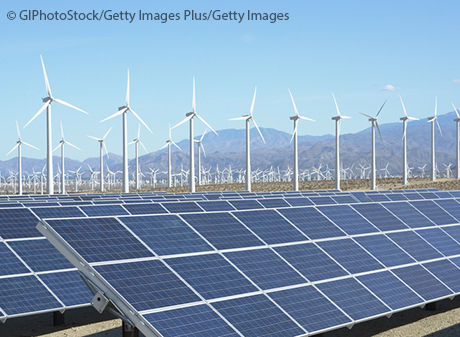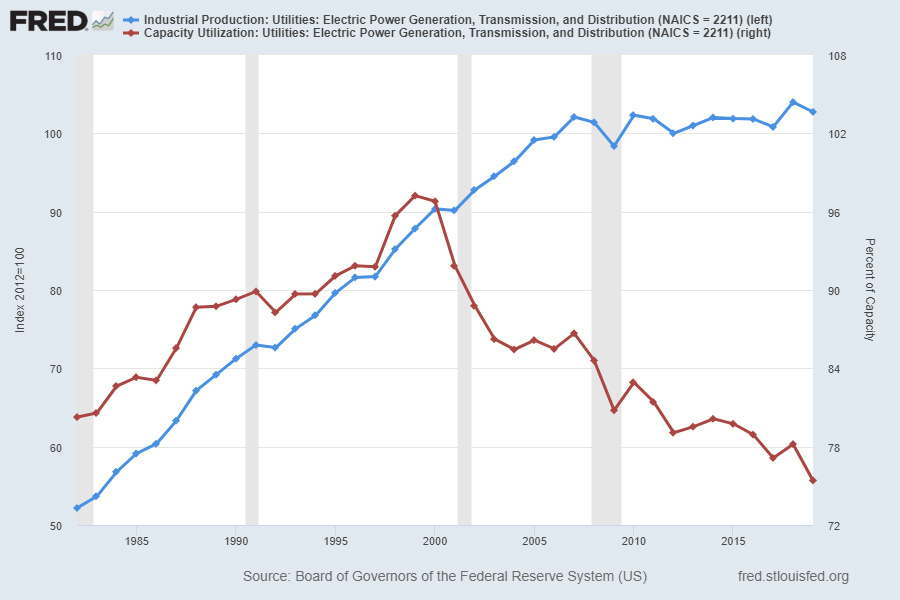As Renewable Energy Grows, So Does Spare Capacity in Electricity Generation

Maintaining excess capacity to generate electricity can be expensive for utilities, yet excess capacity has grown steadily in recent years. A recent Economic Synopses essay explains why this might be the case by examining the link between the rise in renewable sources of electricity and the decline in production capacity utilization.
Senior Economic Education Specialist Diego Mendez-Carbajo noted that it is costly and impractical to store large quantities of electricity to meet future demand; thus, consumption and production of electricity generally move in lockstep.
“Maintaining production capacity at the ready for when there is more demand is an expensive investment for utility companies,” he wrote. “The challenge for utility companies is to provide energy at low costs for uncertain and variable demand.”
Changing Capacity Utilization Rates
The figure below shows how electricity production (the blue line) and average capacity utilization (the red line) have changed in the past four decades.

Between 1982 and 2000, production grew 73% and average capacity utilization increased from 80% to 97%, as utilities operated closer to their maximum production capacity, Mendez-Carbajo observed.
Between 2001 and 2019, however, this trend reversed, he noted. Electricity production grew 14%, but capacity utilization fell from 92% to 75%, as electric utilities operated with greater spare capacity.
Role of Renewable Energy
The development of renewable electricity sources, such as solar and wind power, might help explain this growth in excess capacity during the past two decades, the author proposed.
“The rapid expansion of solar parks and wind turbine farms has made those methods of generating electricity the largest renewable source of electricity in the United States,” he wrote. “In 2019, their combined output surpassed hydroelectric production by 36 percent.”
Yet, solar and wind power rely on the weather to produce electricity. To ensure a regular supply of energy, windmills must be built over a broad area and in sufficient quantities so they can accommodate variation in consumer demand, Mendez-Carbajo noted.
“That is, to meet both periods of low production—due to cloudy or windless days—and of peak demand, excess production capacity must be built in,” he wrote.
As an example, Mendez-Carbajo pointed out the experience of Germany, where the government established targets for the share of renewable sources in electricity consumption; there, capacity utilization dropped 20 percentage points between 2003 and 2017 while actual power generation stayed the same.
Additional Resources
- Economic Synopses: Renewable Sources of Electricity: Where Excess Capacity Is Built-In
- Page One Economics: How Economics Informs Environmental Policy: A Case Study of Shale Gas and Oil
- On the Economy: Coal Declining Due to Economics, Not Regulation
Citation
ldquoAs Renewable Energy Grows, So Does Spare Capacity in Electricity Generation,rdquo St. Louis Fed On the Economy, Oct. 27, 2020.
This blog offers commentary, analysis and data from our economists and experts. Views expressed are not necessarily those of the St. Louis Fed or Federal Reserve System.
Email Us
All other blog-related questions

